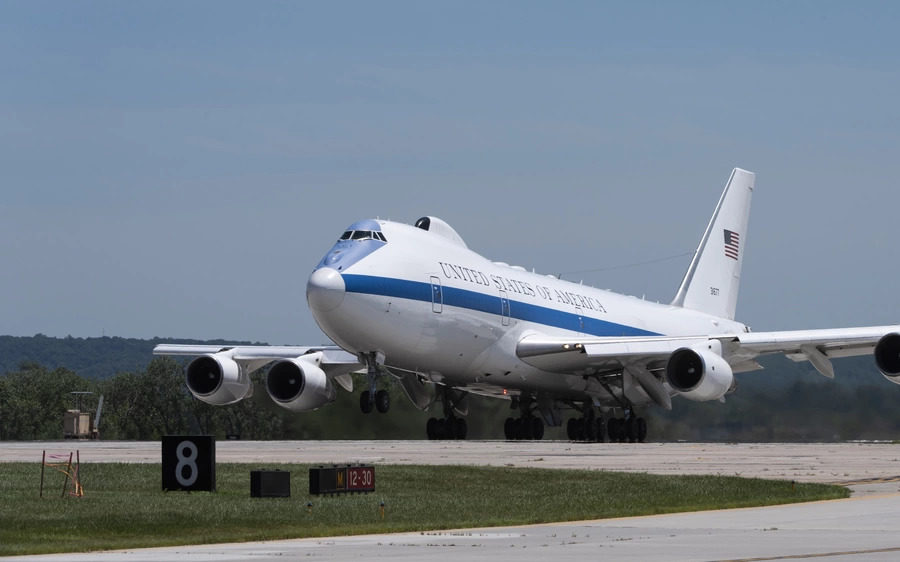The Air Force awarded a $13.08 billion contract to the Sierra Nevada Corporation on April 26 for its Survivable Airborne Operations Center aircraft, the successor to the service’s E-4B “Doomsday” plane.
Like the E-4B, officially called the National Airborne Operations Center, the SAOC will be meant to withstand a nuclear attack and keep the government running from the air during a crisis.
Sierra Nevada Corp. was one of two bidders for the SAOC, according to a Pentagon release. Reuters reported back in December that Boeing, the only other bidder and the builder of the E-4, was eliminated from the competition.
Work on the contract is slated to last until 2036, the DOD release states.
The Air Force first started work on SAOC in 2019, but the process has been slow and was delayed several times. By June 2022, lawmakers said they were “concerned” by the lack of progress and the “availability and capability” of the E-4 fleet, which has been flying since the 1970s.
Progress is slated to ramp up rapidly now. After spending just $94 million on the program in fiscal 2023, the Air Force got $744 million from Congress for 2024 and is seeking $1.69 billion in 2025.
According to Air Force budget documents, the SAOC will be a commercially-derived aircraft “hardened to protect against nuclear and electromagnetic effects and modified with an aerial refueling capability to enable sustained airborne operations.” It will also need secure command, control, and communications systems and modern IT infrastructure.
The E-4B fleet consists of four modified Boeing 747s that are struggling with “capability gaps, diminishing manufacturing sources, increased maintenance costs, and parts obsolescence,” according to budget documents. The fleet’s mission capable rate has been steadily declining, reaching a low of 55.4 percent in 2022, the most recent year for which data is available.
To keep the plane flying until the early 2030s, the Air Force has invested in virtual reality training for the E-4, using a 3-D scan of the interior and exterior to create training modules for maintainers and operators.
